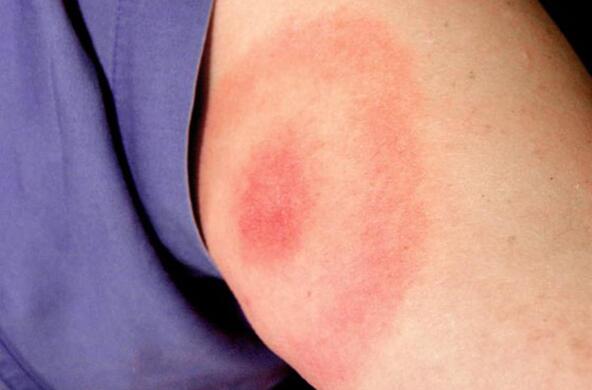Millions of Americans are under stay-at-home orders as the coronavirus spreads across the country, prompting some to spend more time than usual outdoors during the extended social isolation.
While hiking in the woods can provide a much-needed change of scenery, scientists are urging nature-seekers to take precautions against tick encounters.
Nearly 50% of ticks are infected with Lyme disease or other pathogens that can severely disrupt people’s immune systems, potentially making them even more vulnerable to COVID-19, said Goudarz Molaei, director of the Connecticut Agricultural Experiment Station’s passive tick surveillance and testing program.
There’s no evidence ticks can carry or transmit the virus that causes COVID-19, Molaei said, but a person who contracts a tick-borne illness and is then exposed to the coronavirus could have an especially difficult time recovering.
“Some of the people who are exposed to the coronavirus are more likely to get sick or die if they have certain other health issues,” said Richard Ostfeld, a disease ecologist at the Cary Institute of Ecosystem Studies in Millbrook, New York.
“We don’t know if an infection with a tick-borne pathogen is one of those issues, but it could be,” Ostfeld continued. “We should be concerned about the possibility that people will have increased severity of illness if they are also suffering from a tick-borne disease.”
People can encounter ticks year-round in many parts of the U.S., though they are typically most active between April and September. Most Lyme disease cases are reported in June and July, and over 90% of them occur in 15 states: Connecticut, Delaware, Maine, Maryland, Massachusetts, Minnesota, New Hampshire, New Jersey, New York, Pennsylvania, Rhode Island, Vermont, Virginia, West Virginia and Wisconsin.
Molaei said his lab in Connecticut has received 750 ticks for testing from Dec. 1 to Tuesday ― nearly four times as many as the same time period the previous year. His lab received 540 ticks during the same time period ahead of 2017′s record season for tick-borne diseases.
The increased number of ticks sent to his lab this year is likely caused by a few factors, Molaei said. For one, warmer winters and earlier springs fueled by climate change draw ticks out earlier. Plus, he suspects more people are hiking during the pandemic, therefore increasing their chances of encountering the bloodsuckers.
“People used to go out for outdoor activities on Saturdays and Sundays, sometimes in the afternoon,” Molaei said. “But now they are out and doing outdoor activities almost every day.”
“Even though we are all concerned about coronavirus, we have to be mindful that tick-borne diseases are not going away,” he added. “We have to be careful, particularly at this time when hospitals and even clinics are overworked.”
Lyme disease, the most common tick-borne illness, can cause unpleasant symptoms like a rash, facial paralysis and swollen knees. But it isn’t always easy to detect, and if left untreated can progress to complications like memory problems, heart irregularities and chronic arthritis.
More than 35,000 cases of Lyme disease are reported to state health departments nationwide every year, though studies suggest the actual number of people diagnosed and treated for the disease annually is closer to 300,000, according to the U.S. Centers for Disease Control and Prevention.
Other tick-borne illnesses include babesioisis, ehrlichiosis and Rocky Mountain spotted fever, as well as the potentially fatal Powassan disease, which led to former North Carolina Sen. Kay Hagan’s death in October.
“Even though we are all concerned about coronavirus, we have to be mindful that tick-borne diseases are not going away.”
- Goudarz Molaei, tick expert
Unlike Lyme disease, which can take ticks at least a day to transmit to hosts, Powassan pathogens are passed on in just 15 minutes ― making immediate removal of the tick and treatment essential.
The early appearance of ticks this year doesn’t mean there will be more of them overall, Ostfeld said. He predicts an average tick population this season based on last summer’s numbers of white-footed mice, a highly popular host of the eight-legged parasites. These mice are also primary carriers of Lyme disease and other tick-borne illnesses.
An average tick season is still a risky year, Ostfeld warned. He shares Molaei’s concern that Americans are spending more time outdoors this year ― either while the stay-at-home orders are in place or immediately after social distancing measures are lifted ― and consequently encountering more ticks.
“I hope that people are able to enjoy the outdoors ― I think it’s incredibly important for our mental health and our physical health,” Ostfeld said. “But we certainly need to protect ourselves.”
The CDC’s website offers several recommendations for preventing tick bites, including using certain insect repellents, checking your body and showering soon after being outdoors, and placing clothes in a dryer on high heat for at least 10 minutes to kill any stowaways.
Hikers should be sure to walk in the center of a trail and away from long grass and brush, Molaei said. He recommends dog owners do not bring their canine friends for hikes in wooded areas to avoid an additional risk of tick encounters. If a hiker does bring a dog, they should not let the animal off-leash.
Wearing light-colored clothing, long sleeves and closed-toe shoes, and tucking your pants into your socks, can also prevent tick bites when hiking.
“It’s really important to not emerge from the COVID pandemic only to get Lyme,” Ostfeld said. “Don’t ignore some of the diseases we’ve grown used to just because there’s a new kid in town.”







